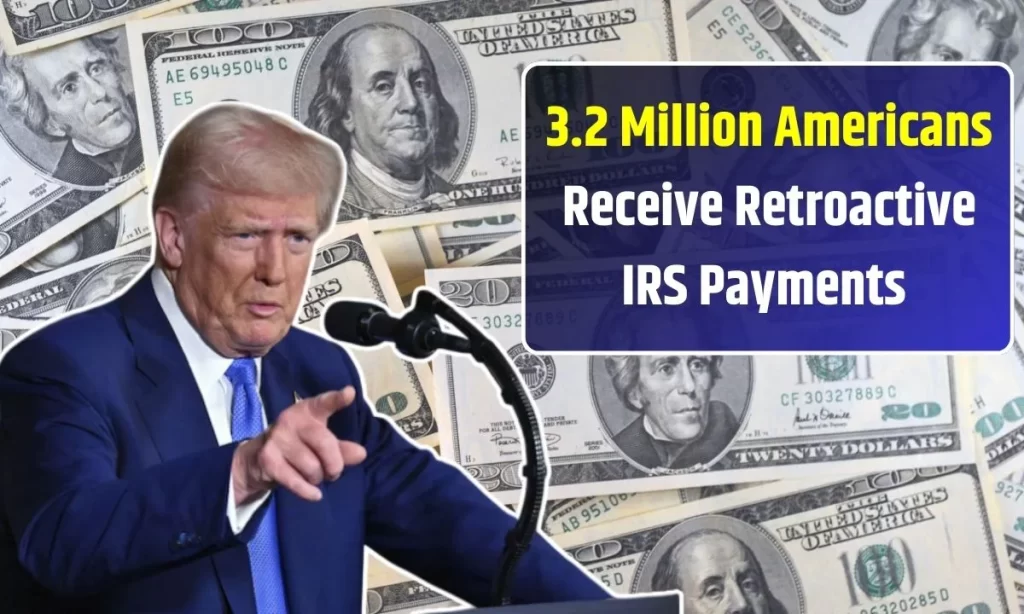The IRS has made headlines by issuing retroactive payments to over 3.2 million Americans, providing much-needed financial relief to those who may have been affected by various tax issues. This significant move is part of the IRS’s ongoing efforts to ensure that eligible taxpayers receive the benefits they are entitled to. With many individuals and families experiencing financial strain, these payments can play a crucial role in alleviating some of the burdens. Understanding the details of these retroactive payments, who qualifies, and how they can impact your financial situation is essential. This article will break down the key aspects of this development, providing clarity and insight for those looking to navigate the complexities of their tax obligations and benefits.
IRS Retroactive Payments Explained
Retroactive payments are funds issued by the IRS to correct previous underpayments or to compensate taxpayers for benefits they were entitled to but did not receive in a timely manner. This process is crucial for ensuring fairness in the tax system and providing relief to those who have been financially impacted.
Eligibility for Payments
To qualify for the retroactive payments, taxpayers must meet specific criteria set by the IRS. This includes individuals who have filed their tax returns and have been identified as eligible for certain credits or benefits that were not adequately addressed in prior payments.
Impact on Tax Filings
Receiving a retroactive payment can have implications for an individual’s tax filings. It may affect the amount owed for the current tax year or provide additional credits that can be claimed in subsequent years. Understanding how these payments influence overall tax obligations is vital for effective financial planning.
How to Claim Your Payment
Eligible individuals do not need to take any action to receive their retroactive payments, as the IRS automatically processes these payments based on the information available in their tax records. However, it is essential to ensure that your tax filings are accurate and up-to-date to avoid any delays.
Payment Amounts
The amount of retroactive payment received can vary significantly based on individual circumstances, including income level, filing status, and eligibility for specific tax credits. Understanding how these amounts are calculated can help taxpayers better anticipate the financial support they may receive.
Common Misconceptions
There are several misconceptions surrounding retroactive payments, including beliefs about who qualifies and how payments are determined. Clearing up these misunderstandings is crucial for ensuring that eligible individuals do not miss out on financial support.
| Category | Eligibility Criteria | Payment Process | Impact on Taxes | Common Misconceptions |
|---|---|---|---|---|
| Retroactive Payments | Must have filed tax returns | Automatic processing by IRS | Affects current and future filings | Many think only low-income qualify |
| Eligibility | Specific credits or benefits | No action needed from taxpayers | May increase tax refund | Assumption of fixed payment amounts |
| Claiming Payments | Identified by IRS records | Payments sent via direct deposit | Requires accurate filings | Belief that late filings disqualify |
| Payment Amounts | Dependent on individual circumstances | Varies based on eligibility | Can impact overall tax liability | Misunderstanding of credit calculations |
FAQs
Frequently Asked Questions
What are retroactive payments from the IRS?
Retroactive payments from the IRS are funds issued to taxpayers to correct previous underpayments or to compensate for benefits that were not received on time.
Who is eligible for these retroactive payments?
Eligibility typically includes individuals who have filed their tax returns and qualify for certain credits or benefits identified by the IRS.
How do I claim my retroactive payment?
Taxpayers do not need to take action to claim their retroactive payment, as the IRS automatically processes these based on their tax records.
Will receiving a retroactive payment affect my taxes?
Yes, receiving a retroactive payment can impact your current and future tax filings, including potential changes to your tax liability or refund amounts.


